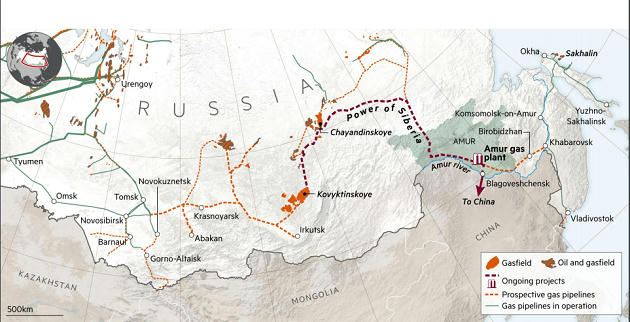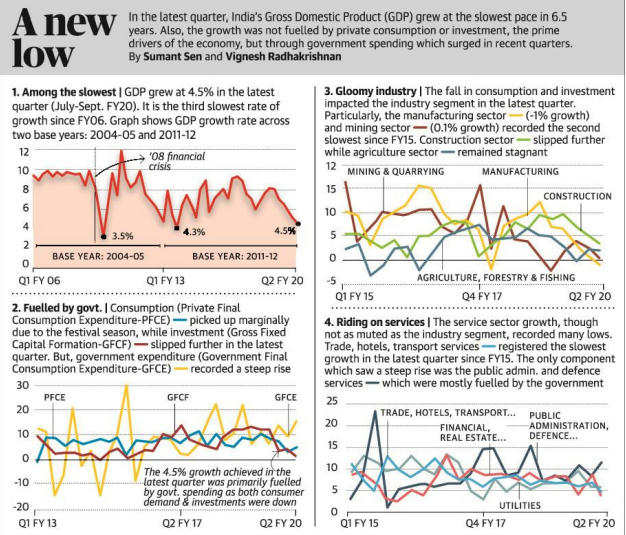Table of Contents

Panel finalises role of Chief of Defence Staff
- An implementation committee constituted to finalise the responsibilities of the soon-to-be-created post of Chief of the Defence Staff (CDS) has submitted its report, Minister of State for Defence Shripad Naik said in a written reply in the Rajya Sabha on Monday. The government said the post would come within the ambit of the RTI Act.
- The Chief of the Defence Staff will act as the single-point military adviser to the government on military and strategic issues and oversee procurement, training and logistics.
- General Bipin Rawat– who is serving a rare full three year term as the Indian Army Chief after he superseded two officers in 2016 – is likely to get a term of over two years as the CDS, which will largely see the creation of a new structure to provide military advise to the government and implement joint procurement by the three services.
- The appointment of a new CDS is expected to be announced in December.
- Sources have confirmed that a committee tasked to draw out the role, responsibilities and powers of the CDS has submitted its report, which is to be approved by the Cabinet Committee on Security (CCS). The recommendation includes creation of a post senior to the current service chiefs with an age limit of 64 years. As reported by Economic Times, the government had tasked National Security Advisor (NSA) Ajit Doval to head the committee for the setting up of a new position that was announced by PM Narendra Modi at his Independence Day address. While joint operations and tri-services commands are likely to be overseen by the CDS, the top officer is set to be heavily involved in procurement of military equipment as well.
- Given the shrinking capital budget of the defence ministry, this role will determine immediate procurement cycles for the three forces.

What is the Purchasing Managers’ Index?
- The Purchasing Managers’ Index (PMI) is an index of the prevailing direction of economic trends in the manufacturing and service sectors. It consists of a diffusion index that summarizes whether market conditions, as viewed by purchasing managers, are expanding, staying the same, or contracting.
- The purpose of the PMI is to provide information about current and future business conditions to company decision makers, analysts, and investors
How is the PMI derived?
- The PMI is derived from a series of qualitative questions. Executives from a reasonably big sample, running into hundreds of firms, are asked whether key indicators such as output, new orders, business expectations and employment were stronger than the month before and are asked to rate them.
- A figure above 50 denotes expansion in business activity. Anything below 50 denotes contraction. Higher the difference from this mid-point greater the expansion or contraction.
- The rate of expansion can also be judged by comparing the PMI with that of the previous month data. If the figure is higher than the previous month’s then the economy is expanding at a faster rate. If it is lower than the previous month then it is growing at a lower rate.


- The Sustainable Development Goals (SDG), adopted by member countries of the United Nations in 2015, set a target of ending the epidemics of AIDS, Tuberculosis and Malaria by 2030 (SDG 3.3).
- The key indicator chosen to track progress in achieving the target for HIVAIDS is “the number of new HIV infections per 1,000 uninfected population, by sex, age and key populations”.
- In the terminology of HIV prevention and control, the phrase “key populations” refers to: men who have sex with men; people who use injected drugs; people in prisons and other closed settings; sex workers and their clients, and transgender persons.
Bridging gaps
- In order to infuse energy and urgency into global efforts to combat HIV-AIDS and complement the prevention target set by the SDGs, an ambitious treatment target was also adopted through UNAIDS, the lead UN agency that coordinates the battle against HIV.
- The “90-90-90” target stated that by 2020, 90% of those living with HIV will know their HIV status, 90% of all people with diagnosed HIV infection will receive sustained anti-retroviral therapy and 90% of all people on such therapy will have viral suppression.
- The gaps in detection, initiation of drug therapy and effective viral control were to be bridged to reduce infectivity, severe morbidity and deaths from undetected and inadequately treated persons already infected with HIV, even as prevention of new infections was targeted by SDG 3.3.
- Where are we, at the end of 2019, on the road to the 2020 and 2030 targets? While much success has been achieved in the past 20 years in the global battle against AIDS, there has been a slowdown in progress which seems to place the targets out of reach. There has to be a fresh surge of high-level political commitment, financial support, health system thrust, public education, civil society engagement and advocacy by affected groups — all of which were part of the recipe for rapid progress in the early part of this century.
High and low points
- It is the confluence of those ingredients that made it possible for the world to achieve a reduction in new HIV infections by 37% between 2000 and 2018. HIV-related deaths fell by 45%, with 13.6 million lives saved due to Anti-Retroviral Therapy (ART). Not only were effective drugs developed to combat a disease earlier viewed as an inescapable agent of death but they also became widely available due to generic versions generously made available by Indian generic manufacturers, led by the intrepid Yusuf Hamied. A rush of public and private financing flowed forth in a world panicked by the pandemic. Ignorance and stigma were vigorously combated by coalitions of HIV-affected persons who were energetically supported by enlightened sections of civil society and the media. Never before had the world of global health resonated so readily to the rallying cry for adopting a rights-based approach and assuring access to life-saving treatments. According to a recent report by UNAIDS, of the 38 million persons now living with HIV, 24 million are receiving ART, as compared to only 7 million nine years ago.
- Why then the concern now? At the end of 2018, while 79% of all persons identified as being infected by HIV were aware of the fact, 62% were on treatment and only 53% had achieved viral suppression — falling short of the 90-90-90 target set for 2020.
- Due to gaps in service provision, 770,000 HIV-affected persons died in 2018 and 1.7 million persons were newly affected. There are worryingly high rates of new infection in several parts of the world, especially among young persons. Only 19 countries are on track to reach the 2030 target. While improvements have been noted in eastern and southern Africa, central Asia and eastern Europe have had a setback, with more than 95% of the new infections in those regions occurring among the ‘key populations’. Risk of acquiring HIV infection is 22 times higher in homosexual men and intravenous drug users, 21 times higher in in sex workers and 12 times more in transgender persons.
Complacency, new factors
- There are several reasons for the slowdown in progress. The success achieved in the early part of this century, through a determined global thrust against the global threat, led to a complacent assumption of a conclusive victory.
- The expanded health agenda in the SDGs stretched the resources of national health systems, even as global funding streams started identifying other priorities. Improved survival rates reduced the fear of what was seen earlier as dreaded death and pushed the disease out of the headlines. The information dissemination blitz that successfully elevated public awareness on HIV prevention did not continue to pass on the risk-related knowledge and strong messaging on prevention-oriented behaviours to a new generation of young persons. Vulnerability of adolescent girls to sexual exploitation by older men and domineering male behaviours inflicting HIV infection on unprotected women have been seen as factors contributing to new infections in Africa.
- Even the improved survival rates in persons with HIV bring forth other health problems that demand attention. Risk factors for cardiovascular disease are high among survivors as they age, with antiretroviral drugs increasing the risk of atherosclerosis. Other infectious diseases, such as tuberculosis can co-exist and cannot be addressed by a siloed programme. Mental health disorders are a challenge in persons who are on lifelong therapy for a serious disease that requires constant monitoring and often carries stigma.
- Need for vigil in India
- The Indian experience has been more positive but still calls for continued vigilance and committed action. HIVrelated deaths declined by 71% between 2005 and 2017. HIV infection now affects 22 out of 10,000 Indians, compared to 38 out of 10,000 in 2001-03. India has an estimated 2.14 million persons living with HIV and records 87,000 estimated new infections and 69,000 AIDS-related deaths annually. Nine States have rates higher than the national prevalence figure. Mizoram leads with 204 out of 10,000 persons affected. The total number of persons affected in India is estimated to be 21.40 lakh, with females accounting for 8.79 lakh. Assam, Mizoram, Meghalaya and Uttarakhand showed an increase in numbers of annual new infections. The strength of India’s well established National AIDS Control Programme, with a cogent combination of prevention and case management strategies, must be preserved.
- Drug treatment of HIV is now well founded with an array of established and new anti-viral drugs. The success of drug treatment to prevent mother-to-child transmission, pre-exposure prophylaxis (PrEP) and post-exposure prophylaxis (PEP), and male circumcision, especially among MSM population, is well-documented. Given the wide diversity of the HIV virus strains, development of a vaccine has been highly challenging but a couple of candidates are in early stage trials. However, mere technical innovations will not win the battle against HIV-AIDS. Success in our efforts to reach the 2030 target calls for resurrecting the combination of political will, professional skill and wide ranging pan-society partnerships that characterised the high tide of the global response in the early part of this century. The theme of the World AIDS day this year (“Ending the HIV/AIDS Epidemic: Community by Community) is a timely reminder that community wide coalitions are needed even as highly vulnerable sections of the community are targeted for protection in the next phase of the global response.
- In the early 1990s, India had merely seven million telephones with a waiting time of seven to eight years to get a connection. The simple reason was that the cost of installing a landline telephone was too high and the required average revenue per user (ARPU) just to break even was ₹1,250 per month, which was too high for most Indians at that time.
- Indian telecom grew at a slow pace through government budgets and subsidies. It is in this context that wireless telephony was introduced.
- This would bring down the capital cost, make telephones affordable in India, would be easier to install and bring in private investments for a potentially profitable business.
Rapid growth
- The results have been nothing short of dramatic. The telecommunications sector has grown at a rapid pace, riding on a virtuous cycle of growing demand and increasing competition that has pushed down prices to levels not seen anywhere else in the world.
- Today, the sector is at a turning point. The troubles of today are rooted in the fast-paced growth of yesterday and regulation that increased tele-density by pushing down ARPUs. This drove businesses to work with a single mind focus on consumer acquisition as the base of users ballooned. It is important to take a historic look if one is to understand the imbroglio of today.
- The first telecom auctions for private players were in 1995. The financial bids were unbelievably high; some international consultants proposed large licence fees without understanding Indian affordability. As the dust settled, the winners realized that the bids were economically unsustainable. Several legal ploys were used to stop the payment against bids, cases multiplied, and the telecom dream was stillborn.
- In 1999, when Atal Bihari Vajpayee became Prime Minister, a group of telecom academics and professionals advised him that the only way out of this imbroglio was to cancel the licence fees due to the government and introduce the “revenue share” model.
- He was worried that he would be accused of selling the country and causing huge “loss of revenue”. But this group egged him on saying that India needed this bold step for telecom to thrive and he could do this only in his first hundred days. The Prime Minister took the bold step and licensees were offered an option to switch to revenue-share instead of upfront licence fees.
- This bold step got mobile telephony going. The installation cost of wireless telephony was less than one-fourth of a landline telephone. Low ARPU was no longer a big concern. By around 2003, India had around 300 million telephone lines and the urban market was saturating. Airtel, Vodafone and Idea, with their GSM mobile-licence, were the leaders. The CDMA mobile licensees had grown slowly, stuck with a technology without a future and could not compete. Rural markets required lower tariff, but the GSM trio were happy with the urban market and resisted reduction in tariffs. The market grew at a slow pace since then.
- It was around 2007 that the then government saw this imbroglio and found ways to give new GSM licences using primarily revenue-share. These newcomers, primarily Reliance Communications (RCOM) and Tata Teleservices, dropped tariffs and introduced per-second billing. Others had to follow. The market grew quickly to 900 million lines. Indian telecom was thriving. The operators were making decent money, even with lower tariffs. Till then, India was using only 2G telephony. Data and Internet was at very low speed; 3G telephony was just being introduced and operators were haggling for more 3G spectrum in 900 MHz and 1800 MHz bands. The government was periodically conducting auctions since 2010, fetching large spectrum bids.
- Old versus new players
- Around 2013, the Government made available some spectrum in the 2300-2500 MHz band. This was not considered suitable for 3G telephony then; 4G was in its infancy and there was some concern about technology standards and technology readiness.
- A new company, Reliance Jio, betted on it and won the whole spectrum pan-India through a partner company at a relatively lower price as there was little interest from established operators. Jio had to wait four years to get the technology ready and launched the 4G service late in 2016 and caught the imagination of users. It made voice calls almost free and offered good quality video on smart handsets at very low tariffs. Others did follow suit but paid higher amounts for spectrum in later auctions. Jio has been gaining market share since then. The older operators have been on the defensive, facing serious erosion in market share and profitability. RCOM and Tata Teleservices have been wiped out. Vodafone and Idea merged to just about survive. Airtel, the strongest operator two years back, continues to lose market share and profitability.
Issue of penalties
- It is at this time that the revenue-sharing agreement that companies like Airtel, Idea, Vodafone and others signed in 2001 has come to haunt them. The Supreme Court ruled this October that these companies are liable to pay revenue share not just on telecom revenue but all revenues of the company — sales proceeds on handsets, renting of their towers, infrastructure sharing, and even on dividend incomes from any investment. Furthermore, they have to pay huge late-fees and penalties, totalling ₹1.3 lakh crore.
- While the court has rightly interpreted the written agreement of 2001, the amounts are enormous that when paid, is likely to bankrupt these players. The industry is already saddled with debt of ₹7 lakh crore. Once again India is faced with the prospect of a telecom monopoly or duopoly. Further, except that it says so in a contract, it makes little sense to pay revenue share to the government on unrelated businesses. If the operators ever thought otherwise, they would have hived off these businesses to a sister company as many have done since then.
- It is precisely in such a precarious situation, that the government needs to act, just like it did in 1999. They could offer the operators payment of principal in instalments and waive off interest and penalties. It is critical for the nation to have multiple players compete in telecom services. Besides, the time has come to relook the role of telecom in the country.
- The Prime Minister has rightly emphasized the role digital connectivity plays in society. If India is to reap the benefit of being fully digital, government’s taxes and earnings from telecom should be limited.
- Today, in addition to corporate taxes, the government’s telecom revenue includes Goods and Services Tax, spectrum auction, revenue share as licence fees, amounting to about 30% of customer bill. The government should not look at the telecom sector primarily as a revenue-earner. The money could be better spent by operators to improve today’s average service-quality. This would help telecom reach the remotest parts of the country and the service needs to continue to be affordable.





















 WhatsApp
WhatsApp